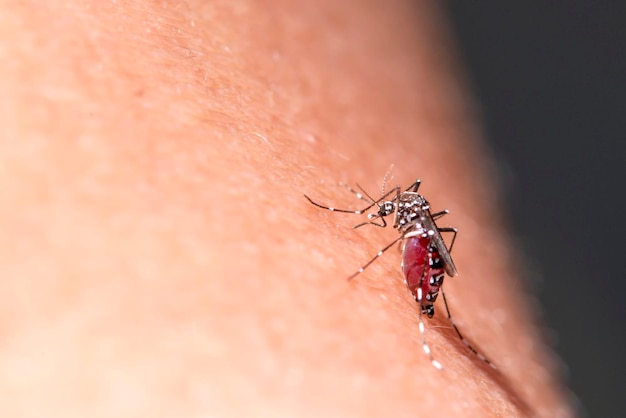Early detection of dengue symptoms is pivotal in saving lives and reducing the virus’s impact. Dengue fever is rising globally, and with it comes the need for awareness and knowledge. Understanding early signs helps in taking timely action, ensuring better management, and conducting effective dengue fever prevention measures.
Dengue fever has become a pressing issue, as the number of cases rises due to climate change and increased travel. As people become more susceptible, knowing the signs and symptoms is crucial. By identifying dengue symptoms, you can take swift action and eventually contribute to reducing the spread of this illness.
Unveiling Dengue: What It Is and How It Manifests
Dengue fever is a viral infection spread by mosquitoes, mostly the Aedes species. When bitten by an infected mosquito, a person can develop dengue symptoms. The illness primarily unfolds in three phases: febrile, critical, and recovery.
- Febrile Phase: This starts with a sudden high fever, often above 104°F (40°C). It may last 2-7 days.
- Critical Phase: Warning signs like abdominal pain, vomiting, and bleeding may appear.
- Recovery Phase: This brings a return of appetite and stabilizing vital signs.
After being bitten, the virus has an incubation period, often 4-10 days. This means symptoms usually show up after a brief delay from the bite. It’s important to know that children are often more affected and might experience severe forms of the disease, leading to dengue fever complications. Dengue symptoms in kids can escalate quickly, making it vital for parents and caregivers to watch for symptoms diligently.
Anybody can get dengue fever, but some groups are at higher risk. These include individuals living in or traveling to areas where dengue is common, such as tropical and subtropical climates. Due to their exposure and living conditions, certain populations are more likely to encounter infected mosquitoes, thus increasing the risk of contracting dengue fever.
Navigating the Symptoms: From Fever to Severe Indications
Detecting dengue symptoms early can make a significant difference. The initial signs often mirror that of a bad flu or even malaria. Familiar symptoms include:
- High fever
- Severe headache
- Pain behind the eyes
- Joint and muscle pain
- Skin rash
At first glance, these might seem like usual discomforts. However, misreading them can lead to bigger issues. Recognizing these signs promptly is vital.
If dengue symptoms push beyond the usual to severe indications, it’s time to seek medical help. Watch for:
- Severe abdominal pain
- Persistent vomiting
- Trouble breathing
- Bleeding gums or nose
- Fatigue
These alarm bells indicate severe dengue, also known as dengue hemorrhagic fever, a serious condition needing immediate medical intervention. Dengue fever diagnosis involves tests that help confirm the presence of the virus.
Getting the right dengue fever diagnosis is essential to ensure you receive accurate treatment like fluid therapy or pain relief. Doctors often opt for fever-relieving meds over aspirin due to safety concerns.
It’s crucial to differentiate dengue fever from illnesses like flu and malaria. These diseases share symptoms, making it challenging, but not impossible, to spot the real cause. Even if it feels like the flu, distinguishing these illnesses helps in planning the perfect treatment.
Proactive Measures: Preventing Dengue and Enhancing Community Awareness
Dealing with dengue fever prevention requires active participation. Here’s what you can do to avoid mosquito bites and limit breeding:
- Use mosquito repellents on exposed skin and clothing.
- Wear long sleeves and pants, especially during peak mosquito hours.
- Install screens on doors and windows to keep mosquitoes out.
- Eliminate standing water, where mosquitoes breed, by clearing drains and disposing of containers.
Taking these steps supports personal and community health by preventing mosquito breeding grounds. However, individual actions aren’t enough. Communities play a vital role in dengue fever prevention efforts. Simple steps include organizing cleanup drives and educating neighbors about the importance of eliminating stagnant water.
Raising awareness about dengue symptoms and prevention through community outreach and educational campaigns is crucial. Schools, local councils, and organizations can conduct sessions to teach people how to identify symptoms and act immediately.
Once people are informed, they can then share their knowledge with others, creating a ripple effect. With the right information, communities can accurately spot dengue fever signs, seek timely treatment, and avoid complications.
Knowledge empowers people to recognize symptoms early, fostering quick actions that help manage dengue fever treatment better. Early action can minimize the risks of dengue fever complications.
Taking preventive measures and understanding dengue symptoms proves essential in the battle against dengue. Emphasizing personal hygiene, wearing protective clothing, and eliminating mosquito breeding grounds can considerably reduce the spread of dengue.
Join hands with your community to achieve better control over dengue and protect everyone. Being equipped with the right information about dengue symptoms, diagnosis, and necessary interventions can save lives and make communities safer.
Implementing these proactive efforts turns your local area into a healthier, more aware place, ready to tackle dengue head-on. With actionable steps against dengue, you can contribute to a world less burdened by this mosquito-borne threat. Awareness and timely action remain your best allies in this endeavor.

